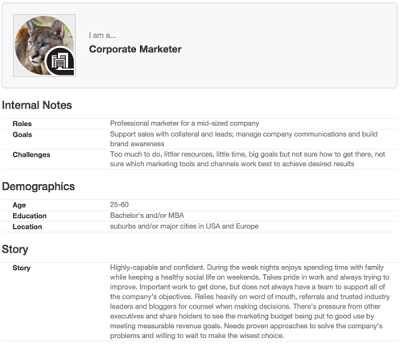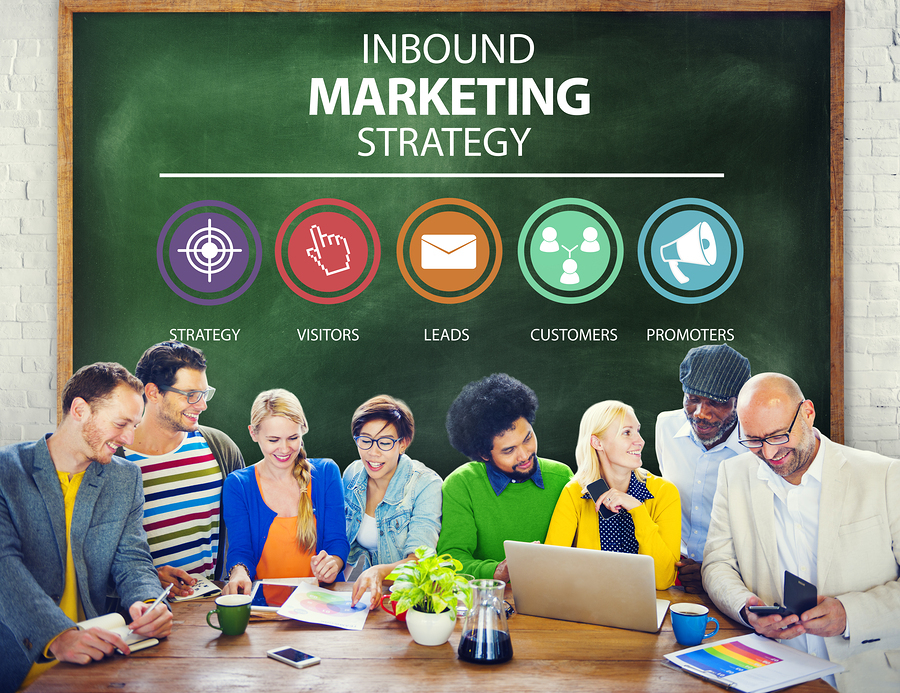Buyer Personas: What Are They and Why Does Your Business Need Them?
The first step to building your business is knowing who your customers are. Understanding your customers and creating buyer personas that outline...
3 min read
Mark Parent
February 26, 2016 8:30:00 AM EST

Are you pumped to create powerful marketing content that compels your visitors to become leads and loyal customers? We are too! Before we can get there, let's start with understanding how powerful buyer personas lay a foundation for all of our marketing efforts - content included.
The first step to building your business is knowing who your customers are. Understanding your customers and crafting full-bodied buyer personas that outline their attributes can help you focus your marketing efforts for better results.
This post explores the concept of a buyer persona - what it is and how it can help your business.
Buyer personas are an essential part of the inbound marketing methodology. If your company is considering adopting an inbound marketing strategy, then developing personas is a key piece to that strategy. Personas provide a solid foundation for more effective marketing and advertising efforts that attract visitors, convert visitors into leads, and close customers.

Sculpt buyer personas as part of a powerful marketing strategy. ![]()
Basically, a buyer persona is the imagined profile of your "typical" customer based on the words of your actual customers. To create one, companies need to first amass both data and testimony from their customers and individuals experiencing problems that could potentially be solved by the company's product or services.
As the Buyer Persona Institute (BPI) points out, "A persona is not merely a description of your buyer." In other words, gathering demographic information is not enough. "But when you have insights into what your buyers think about doing business with you, including verbatim quotes from people who have recently made the decision to solve a similar problem, you have the knowledge you need to align your marketing decisions - from positioning and messaging through content marketing and sales enablement - with your buyer's expectations," BPI concludes.
Developing an ideal persona is a key piece to any effective digital marketing strategy. This persona creates a clear picture of the needs of your customers and therefore allows you to mold your messaging so that you are directly addressing their concerns. Like other features of inbound marketing, this means you are reducing advertising waste, according to Charles E. Gaudet II writing for Forbes.

Mold your marketing content into a masterpiece that speaks to
buyer's challenges and goals, don't just play with clay. ![]()
"Self-service advertising platforms on social media websites like LinkedIn and Facebook allow you to create highly targeted ads for very specific demographics," he writes. "Knowing which magazine, television station or even mailing list to sell from allows you to better match the message with the audience most likely to bite. If you know your buyer persona is female, age 25-35, has a college education and loves to knit, you can ensure your ads appear only in front of people who fit this criteria."
Gaudet adds that a detailed persona also permits you to understand the objections of your customers and potential customers, so you can troubleshoot when your marketing and advertising efforts don't seem to be working.
HubSpot offers a free template, and in another post they propose the 20 questions you need to ask to create the perfect ideal customer. Questions cover details ranging from personal demographics and job titles to media consumption and preferences for interacting with vendors.
Although that may sound like a lot of information to include, it does not have to be complicated. For example, HubSpot's CRM allows us to create ideal personas internally for our whole marketing team to reference when needed. Notice that we don't describe every detail about this potential buyer - we outline the most specific and relevant information needed to provide them with the most helpful, valuable content and services.

Do keep in mind, when you start creating the ideal archetype for your product, you are not just collecting the factual details of your customers' lives but eventually going in depth to get their subjective inclinations on a wide field of topics.
Feel free to start with a simple outline and develop more detail as time allows. That way you will know not just what your customers look like, but how they behave and how to best communicate with them.
Download this free template to get a step-by-step overview and a useful framework for creating buyer personas for your organization.
Make sure to connect with us on LinkedIn to get valuable insight on the latest news in marketing and website design. Follow us here:

The first step to building your business is knowing who your customers are. Understanding your customers and creating buyer personas that outline...

If you've read about digital marketing or partnered with a digital marketing agency, you've likely come across the concept of buyer personas. As...

Modern marketing techniques are complex and sometimes difficult to understand, but they work. In most cases, the word "modern" translates to...